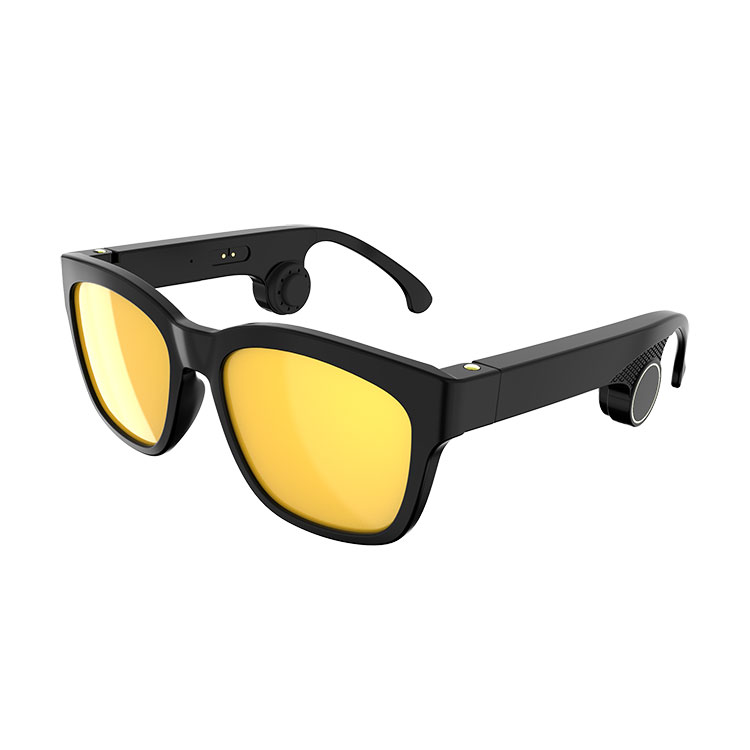Wearable Devices: Revolutionizing Health, Fitness, and Everyday Life
2025-03-18
In recent years, wearable devices have become an integral part of our daily lives, revolutionizing the way we monitor our health, track fitness, and stay connected. From smartwatches to fitness trackers, these devices have evolved to offer a wide range of functionalities, from health monitoring to enhancing productivity. As technology continues to advance, the potential applications of wearable devices are becoming more diverse and impactful.
In this blog, we will explore the different types of wearable devices, their benefits, and how they are changing the way we live, work, and stay healthy.
What are Wearable Devices?
Wearable devices are electronic gadgets that can be worn on the body to collect data, provide notifications, or perform specific functions. These devices are typically designed to be lightweight, comfortable, and hands-free, allowing users to seamlessly integrate them into their daily routines. Wearables often pair with smartphones, computers, or other smart devices to enhance their functionality.
Types of Wearable Devices
1. Smartwatches
Smartwatches are the most popular type of wearable devices, combining the functionality of a traditional wristwatch with advanced features such as:
- Health monitoring (heart rate, blood pressure, sleep tracking)
- Fitness tracking (step count, calorie burn, activity tracking)
- Notifications (calls, texts, emails, and social media updates)
- GPS navigation and music streaming
- Voice assistants like Siri, Alexa, or Google Assistant
2. Fitness Trackers
Fitness trackers are designed primarily to help users monitor their physical activity and health. They often include:
- Step counters
- Heart rate monitors
- Sleep tracking
- Calories burned tracking
- Exercise recognition
Fitness trackers are ideal for people looking to improve their health, maintain an active lifestyle, or achieve fitness goals.
3. Smart Glasses
Smart glasses are wearable devices with integrated technology that can provide hands-free access to information, navigation, and more. Popular features include:
- Augmented Reality (AR) for an enhanced experience
- Voice-controlled commands for easy interaction
- Real-time notifications and updates
- Camera integration for photos and video recording
These glasses are particularly useful for professionals in fields like healthcare, logistics, and manufacturing.
4. Wearable Health Monitors
These devices are specifically designed to monitor various health parameters continuously. They are typically worn on the body, such as patches or bands, and can track:
- Blood glucose levels (important for diabetic patients)
- Heart rate variability
- ECG (electrocardiogram)
- Oxygen saturation levels (SpO2)
They provide real-time health insights and can be life-saving for people with chronic health conditions or those who need constant monitoring.
5. Smart Clothing
Smart clothing integrates sensors into fabrics to monitor physical performance or environmental conditions. Features include:
- Muscle activity tracking
- Body temperature regulation
- Posture correction feedback
- Sweat and skin moisture monitoring
Athletes and fitness enthusiasts are particularly interested in smart clothing to optimize performance.
Benefits of Wearable Devices
1. Improved Health and Fitness Tracking
Wearable devices provide users with the ability to track their health metrics in real-time. This includes:
- Heart rate monitoring during workouts
- Calories burned and steps taken
- Sleep quality tracking to optimize rest
These insights help individuals make informed decisions about their health and fitness routines.
2. Enhanced Productivity
Wearables such as smartwatches allow users to manage their schedules, receive notifications, and access essential information quickly. This helps improve productivity by reducing the need to check smartphones frequently.
3. Continuous Health Monitoring
Many wearable devices offer continuous monitoring of vital signs such as heart rate, blood pressure, and oxygen levels, providing early detection of any irregularities. This is especially useful for individuals with chronic health conditions.
4. Convenience and Hands-Free Operation
Wearable devices like smartwatches and fitness trackers allow users to access information and control functions without the need for a smartphone or computer. This hands-free convenience makes them ideal for people on the go or during workouts.
5. Motivation and Goal Tracking
Wearables offer features such as daily fitness goals, challenges, and reminders, which help users stay motivated and achieve their fitness targets.
Future Trends in Wearable Devices
The future of wearable devices is bright, with many advancements on the horizon, such as:
1. Health-Centric Innovations
Wearable devices will increasingly focus on improving health outcomes by tracking more advanced metrics such as blood pressure, glucose levels, and even stress levels. This will be a game-changer in managing chronic health conditions.
2. Integration with AI and Machine Learning
Wearables are expected to integrate AI and machine learning algorithms to predict health trends and offer personalized health advice based on collected data.
3. Improved Battery Life
Battery life is one of the primary concerns for wearables. The future will see improvements in battery technology, enabling longer use and faster charging times.
4. Advanced Augmented Reality (AR) Experiences
Smart glasses and other wearables will offer more immersive AR experiences for various applications, including gaming, education, and healthcare.
5. Enhanced Fashion and Design
As wearables become more integrated into everyday life, expect to see more fashion-forward designs. Devices will blend seamlessly with clothing, jewelry, and accessories, offering a stylish yet functional experience.
Conclusion
Wearable devices have transformed the way we approach health, fitness, and daily tasks, making life more efficient and enjoyable. Whether it’s tracking your workout, receiving a notification, or monitoring vital health signs, wearables are becoming indispensable companions in our connected world.
As technology continues to evolve, we can expect even smarter, more personalized devices that empower users to take control of their health and productivity.



